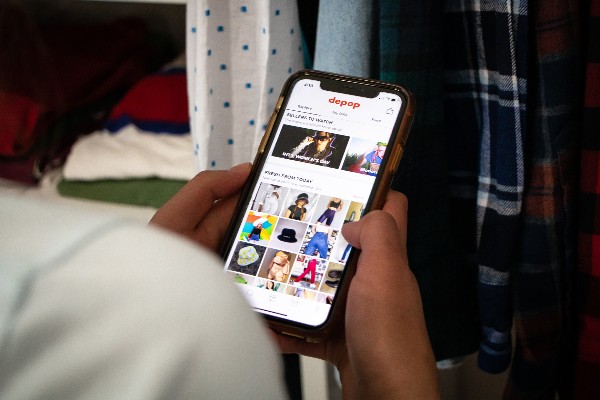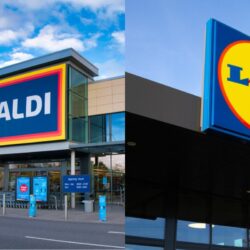In recent years, vintage clothing has undergone quite a transformation, becoming a trending theme within the fashion sector as shoppers look to make more sustainable choices when on the hunt for their next outfit.
According to the online thrift store Thredup, we can expect to see the resale market grow much faster than traditional retail, with the second-hand fashion market expected to be twice the size of fast fashion by 2030.
The global report – which was conducted by Thredup, with analysis from GlobalData – stated that the resale market is growing 11 times faster than traditional retail. If it continues to grow at this rate, it should be worth $84 billion by 2030, when fast fashion is predicted to be worth about $40 billion.
With more than 12m posts on Instagram at the time of writing, vintage clothing has become increasingly trendy across social media. This has also made way for the rise of the mega-popular Depop sellers, many of whom have managed to amass cult status among their young customers, who are looking to keep up with trends while remaining eco-friendly.
With sustainability now on the forefront of shoppers’ minds more than ever, you’d be forgiven for thinking charity shops would be filled with a new wave of savvy shopaholics. This isn’t the case, with the majority heading online to find their hidden gems instead.
Aisling Byrne, founder of the virtual clothes swap website Nuw told Retail Gazette she has a “great love of charity shops” but found that the charity shop experience can be very different based on where you live and the sizes you are searching for.
“Charity shopping tends to be more experiential in cosmopolitan and gentrified cities where thrifting is a big part of the culture and is seen as being ‘on trend’,” she explained.
“You can often find the best charity shop finds in more expensive locations which not everyone has access to and as charity shops become more ‘on trend’ the prices increase, cutting out that previous accessibility which made them competitive with high street brands.”
“The global pandemic saw fashion resales soar”
Byrne added that the other barrier is often the lack of size diversity, although this is not unique to charity shops and is often the case on resale platforms as well.
“Relying on a single store or several brick and mortar stores in your local area to find enough variety in your size ranges (especially outside the ranges of UK 8-12) can be difficult,” she explained.
“Going online can provide a breath of variety that simply cannot be achieved in store.”
With the complete easing of Covid-19 restrictions across England, various Depop sellers have now branched out, launching successful physical pop-up stores across the UK.
Popular sellers such as Isabella Vrana, who boasts 164,000 followers on Depop, saw eager shoppers queue for over three hours round the streets of London to step foot in the store.
Amy Lee, senior manager global trends and insights, apparel at Avery Dennison (which provides innovative digital solutions for the fashion industry) explained how these smaller, online stores have managed to amass such such followings and notoriety online.
“In the same way that social media influencers amass large followings, this space has been democratised and it’s accessible for sellers to be successful through engaging like-minded audiences who align with their taste and price level,” said Lee.
“There’s a trust element, too,” she continued.
“Younger consumers who are particularly concerned about climate change and the future of the planet might have greater trust for a small-scale seller, who they can have a direct conversation with, as opposed to a large brand that can feel inaccessible.”
Lee also stated that her research revealed that the optimal way to shop is through a mix of both online and offline channels. So it is unsurprising that successful Depop sellers have gained traction with physical pop-up stores, by expanding and improving the overall experience.
As heritage retailers look to become more sustainable with rental fashion ventures and recycling schemes being announced regularly from the likes of M&S and Harrods, is it possible for them to tap into the successful business models of these Depop sellers? And if so, how?
“Resale will work for luxury fashion and mid-market fashion,” said Aisling Byrne.
“These resale trials have already shown some success through start-ups like Reflaunt working with brands on their resale platforms. However, this is not the case for high-street and fast-fashion.”
Byrne explained that mass market retailers sell clothes for a low-cost at first purchase, meaning it is not economically viable for brands to create their own resale platform.
“The reason for this is because if you sell an item of clothing for £20 there is too much logistics, labour, environmental impact, and storage associated in getting that item back, quality controlled and ready to be resold.
“Brands rarely resell clothes that have been returned and this gives us little hope that they would look to do this with clothes that have been sold and worn.”
However, London-based personal stylist Lindsay Barry said that heritage brands could potentially work with these sellers in a more creative way, such as creating limited edition exclusive items for them to sell on the Depop or Vinted platforms.
“Collaborations with top Depop influencers or sellers can create a unique opportunity to target a younger audience,” said Barry.
“Alternatively, retailers could look at hosting online sample sales or archive sales to keep excess stock in circulation with lower price points.”
“Gentrification is slowly creeping its way into Depop“
In recent years there have been concerns that Depop has now become gentrified, as what started off as a platform for people to sell unwanted clothes has turned into a app where Depop resellers try to make high profits by exploiting trends.
Barry confirmed that “gentrification is slowly creeping its way into Depop” but explained that “not all sellers are exploiting trends for profit.”
Because the platform’s model allows anyone to buy and sell, she says it essentially becomes a free marketplace for all.
“This may classify as gentrification, but I don’t believe that Depop sellers who want to grow a business out of sourcing and selling trends are necessarily a bad thing. Market stalls on Portobello Market, for example, are run the same way… the vendor spends a good deal of time sourcing goods to be sold at a profit.
“Depop just offers this selling opportunity online to a wider audience. Although this is not the initial intention of the platform, perhaps it is the evolution of consumer demand.”
Unless Depop can come up with a slick way of monitoring sellers’ accounts terms and conditions, it will prove very tricky to combat this.
Click here to sign up to Retail Gazette’s free daily email newsletter

















